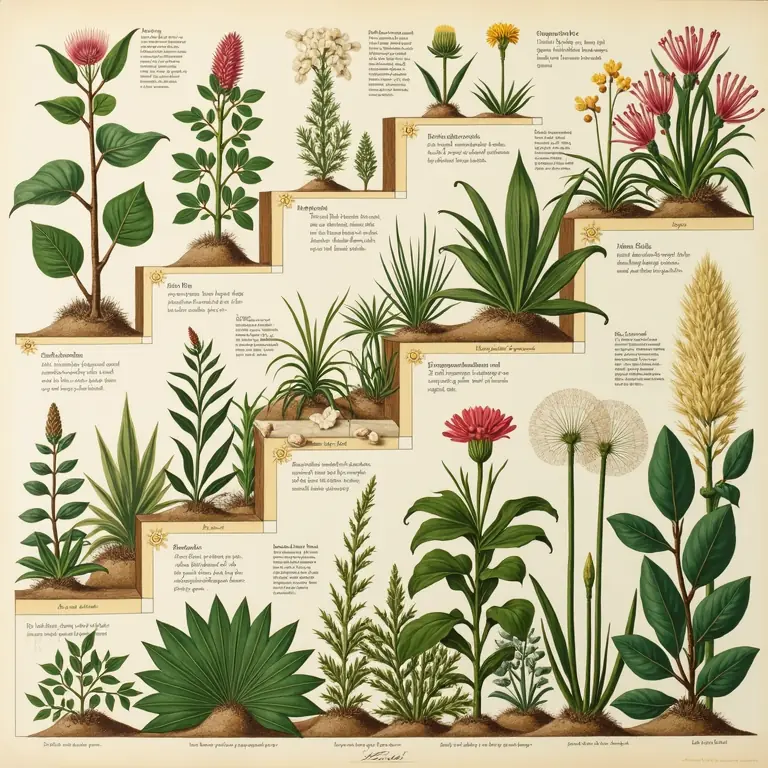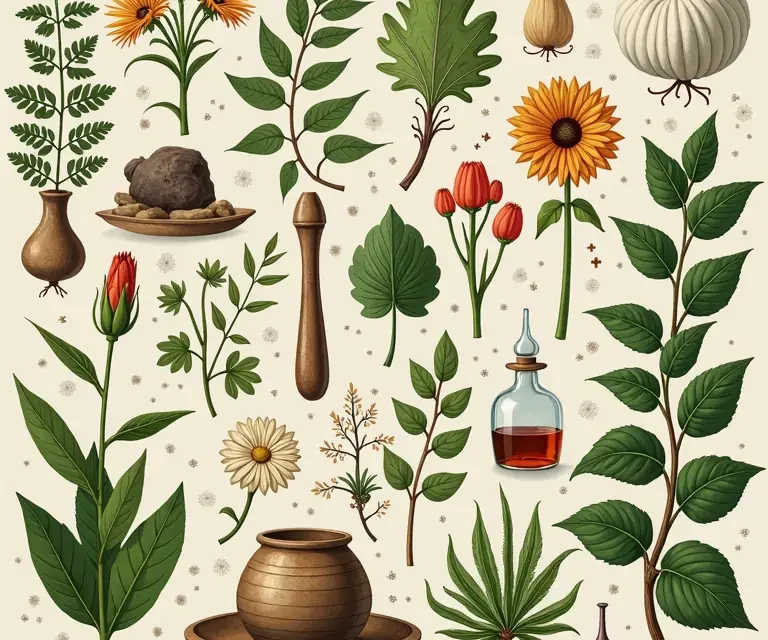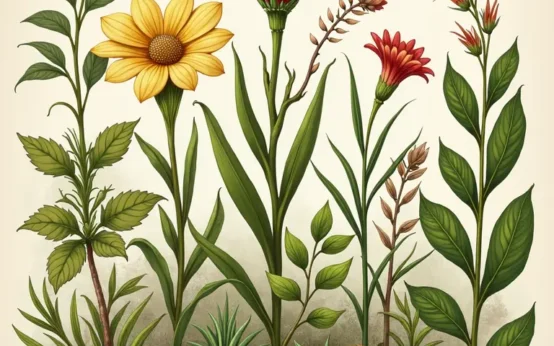For millennia, humans have turned to the natural world for healing. Before the advent of modern pharmaceutical science, plants were the primary source of medicines, used in rituals, remedies, and to alleviate suffering. This reliance wasn’t born of ignorance, but a deep, observational understanding of the properties held within the botanical kingdom. Today, even with the sophisticated tools of modern chemistry, a significant portion of our pharmaceuticals are either directly derived from plants or inspired by plant compounds. This article will explore the fascinating journey from ancient folk remedies to the modern pharmaceutical industry, tracing the botanical origins of many everyday medicines and highlighting the enduring connection between nature and well-being.
Ancient Roots: Herbalism in Early Civilizations
The earliest evidence of medicinal plant use dates back tens of thousands of years. Archaeological findings suggest Neanderthals used plants to treat injuries and illnesses. However, it’s with the rise of early civilizations that we see a more systematic approach to herbalism.
Mesopotamia and Egypt
In Mesopotamia (around 3000 BCE), cuneiform tablets detail hundreds of recipes for medicines, many utilizing plants like poppy (for pain relief), licorice (for coughs), and thyme (as a disinfectant). Egyptian papyri, such as the Ebers Papyrus (circa 1550 BCE), are veritable encyclopedias of herbal remedies. They describe the use of aloe vera for skin conditions, garlic for various ailments, and willow bark (containing salicylic acid, the precursor to aspirin) for pain and inflammation. The Egyptians also possessed a sophisticated understanding of pharmacology, including methods for extracting and administering medicines.
Ancient China
Traditional Chinese Medicine (TCM), with roots stretching back over 5,000 years, places immense importance on herbal remedies. The Shennong Ben Cao Jing (The Divine Farmer’s Materia Medica), compiled around the 1st century CE, is a foundational text, cataloging hundreds of plants and their medicinal properties. Ginseng, ginger, and ephedra were (and still are) highly valued in TCM for their invigorating and therapeutic effects. The holistic approach of TCM, emphasizing balance and harmony within the body, remains influential today.
Ancient Greece and Rome
Greek physicians, like Hippocrates (460-370 BCE), considered the ‘Father of Medicine’, emphasized observation and natural remedies. His writings detail the use of plants like chamomile for calming effects, hellebore for inducing vomiting (used cautiously!), and peppermint for digestive issues. Theophrastus (371-287 BCE), a student of Aristotle, wrote Historia Plantarum, a systematic botanical text that laid the groundwork for plant classification. The Romans, heavily influenced by Greek medicine, adopted and expanded upon these practices. Dioscorides’ De Materia Medica (1st century CE) became the definitive pharmacological text for over 1,500 years, detailing the medicinal properties of over 600 plants.
The Medieval Period and Islamic Golden Age
While Europe experienced a period of relative stagnation in scientific advancement during the early Middle Ages, the Islamic world flourished. Scholars translated and preserved the works of Greek and Roman physicians, building upon their knowledge. Figures like Avicenna (Ibn Sina, 980-1037 CE) wrote The Canon of Medicine, a comprehensive medical encyclopedia that became a standard text in Europe for centuries. Islamic physicians made significant contributions to pharmacology, refining distillation techniques and discovering new medicinal plants. Monasteries in Europe also played a crucial role in preserving herbal knowledge, cultivating medicinal gardens (herbariums) and documenting remedies.
The Renaissance and the Age of Exploration
The Renaissance saw a renewed interest in classical learning, including the medical texts of Greece and Rome. The invention of the printing press facilitated the wider dissemination of knowledge. The Age of Exploration brought Europeans into contact with new cultures and, crucially, new plants. Explorers and botanists brought back specimens from the Americas, Asia, and Africa, dramatically expanding the European pharmacopoeia.
New World Discoveries
The Americas were a treasure trove of medicinal plants. Quinine, derived from the bark of the cinchona tree, proved to be a life-saving remedy for malaria, which ravaged Europe for centuries. Indigenous peoples had long used cinchona bark for its medicinal properties. Similarly, the discovery of ipecac (from the roots of Carapichea ipecacuanha) provided a powerful emetic, used to induce vomiting in cases of poisoning. The use of tobacco, initially for medicinal purposes (as a topical anesthetic and treatment for wounds), eventually led to widespread addiction.
The Rise of Modern Pharmacology
The 19th century marked a turning point in the history of medicine. The development of chemistry allowed scientists to isolate and identify the active compounds within plants. This led to the purification of alkaloids, glycosides, and other plant-derived substances with specific pharmacological effects.
Key Discoveries and Isolations
- Morphine (1804): Isolated from opium poppy (Papaver somniferum) by Friedrich Sertürner, morphine became a powerful pain reliever, though its addictive properties were soon recognized.
- Salicin (1828) & Aspirin (1897): Salicin, found in willow bark, was identified as the active ingredient responsible for its pain-relieving effects. Later, acetylsalicylic acid (aspirin) was synthesized, offering a more potent and stable form of the drug.
- Digitalis (1785): William Withering systematically studied the effects of foxglove (Digitalis purpurea) on dropsy (edema), discovering its ability to strengthen the heart and regulate heart rhythm.
- Quinine (1820): Successfully isolated and purified, enabling mass production of a treatment for malaria.
- Atropine (1831): Extracted from deadly nightshade (Atropa belladonna), atropine became important for dilating pupils and treating certain heart conditions.
These early isolations paved the way for the development of synthetic drugs, inspired by the structures and properties of plant compounds. However, even today, many drugs are still directly derived from plants.

Botanical Medicines in the 21st Century
Despite the dominance of synthetic pharmaceuticals, plant-derived medicines remain vitally important. Approximately 25% of modern drugs are directly derived from plants, and many more are synthesized based on plant compounds. Moreover, there is a growing interest in traditional medicine systems, like Ayurveda and TCM, and the potential of botanical medicines to address chronic diseases and improve overall health.
Examples of Modern Plant-Based Medicines
- Paclitaxel (Taxol): Derived from the Pacific yew tree (Taxus brevifolia), paclitaxel is a powerful chemotherapy drug used to treat various cancers.
- Vincristine & Vinblastine: Extracted from the Madagascar periwinkle (Catharanthus roseus), these alkaloids are also used in cancer chemotherapy.
- Galantamine: Derived from daffodils (Narcissus species), galantamine is used to treat Alzheimer’s disease by increasing levels of acetylcholine in the brain.
- Artemisinin: Derived from sweet wormwood (Artemisia annua), artemisinin is a highly effective anti-malarial drug, particularly against drug-resistant strains.
Research continues to uncover new medicinal properties of plants, and biotechnology is being used to enhance the production of valuable plant compounds.
The Future of Botanical Medicine
The relationship between plants and medicine is far from over. Several key areas are driving the future of botanical medicine:
- Drug Discovery: Screening plants for novel compounds with therapeutic potential remains a promising avenue for drug discovery.
- Phytochemistry: Advancements in analytical techniques allow for a deeper understanding of the complex chemical composition of plants.
- Sustainable Sourcing: Ensuring the sustainable harvesting and cultivation of medicinal plants is crucial to protect biodiversity and prevent overexploitation.
- Integrative Medicine: Combining conventional medicine with complementary therapies, including herbal medicine, offers a holistic approach to healthcare.
- Personalized Medicine: Understanding how individual genetic profiles influence responses to plant-based compounds.
The study of ethnobotany – the relationship between people and plants – continues to reveal valuable insights into traditional uses of plants and their potential for modern medicine. The wisdom accumulated over millennia by indigenous cultures, combined with the rigor of scientific research, holds the key to unlocking the full potential of the botanical world for human health.
As we look to the future, it’s clear that plants will continue to play a vital role in healthcare. Recognizing and respecting the botanical origins of our medicines is not only historically important but also essential for ensuring a sustainable and healthy future.
Interested in learning more about the historical evolution of systems we take for granted? Check out the surprisingly recent history of punctuation.
The exploration of our world has always been intertwined with the pursuit of knowledge. Discover how cartography shaped our worldview.
The ingenuity of human invention is exemplified in the creation of automatons. Explore the history of mechanical marvels.
Measuring the world around us has always been a complex endeavor. Learn more about the history of unit measures.
Language itself evolves over time. Discover the origins of common idioms.


 The Surprisingly Consistent Logic of Traditional Herbal Remedies: Beyond Folklore, a History of Observation
The Surprisingly Consistent Logic of Traditional Herbal Remedies: Beyond Folklore, a History of Observation